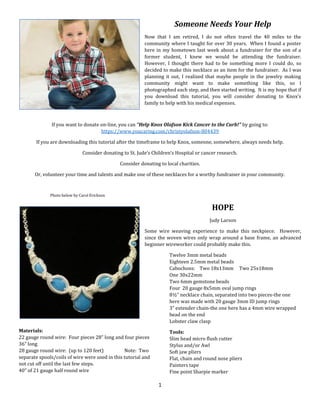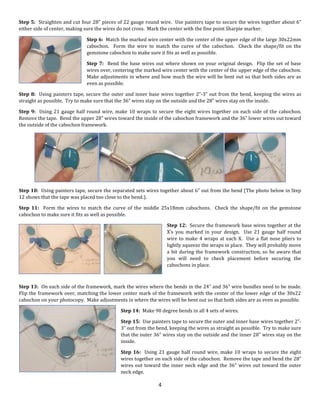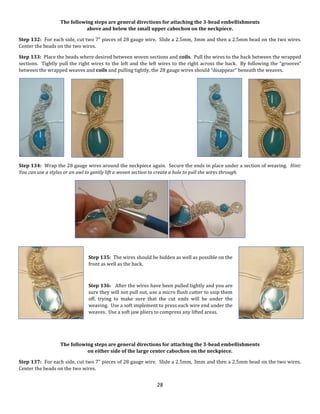The document details a tutorial for creating a wire-woven necklace designed to raise funds for a former student's son's medical expenses, encouraging donations to various causes. It includes a list of materials, tools, and step-by-step instructions for constructing the necklace, catering to those with some wire weaving experience. Additionally, it emphasizes the importance of community support and provides online links for donations.































